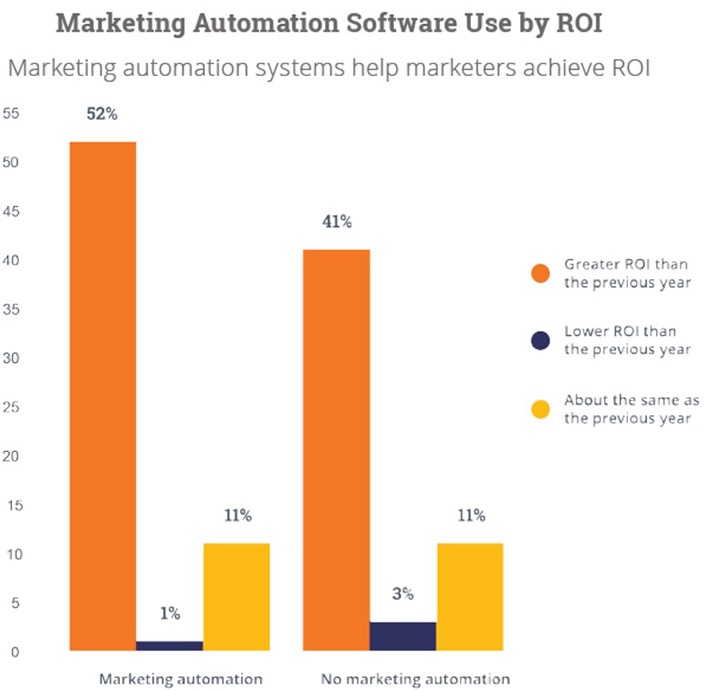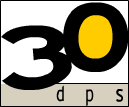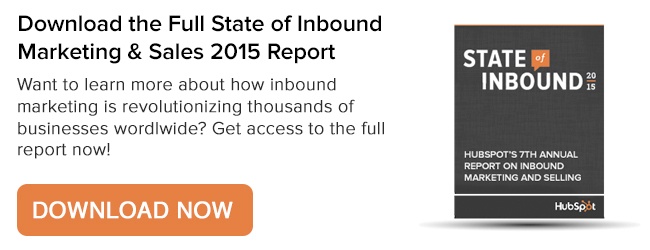Tech Trend: New Data Indicates Top Marketers Have Marketing Automation Software in Common
HubSpot’s latest research, as published in their State of Inbound 2015 report, shows that top marketers use marketing automation software in some form or another. The results from almost 4,000 respondents, the majority of which were marketers who work for B2B small to medium-sized businesses (SMBs), revealed that the “main tool in top marketers’ arsenals is a platform for automating their team’s marketing efforts.”
Some Powerful Stuff
Top marketers are learning that marketing automation is some powerful stuff. Email and lead nurturing, with reporting metrics such as delivery rates, open rate, click-thru rate, bounce rate, and conversion rates give marketers and sales teams insights they’ve never known before. When a system can trigger emails via workflows or as a follow-up to form submissions, the challenges that come with too few sales staff are often diminished. Lead management tools can collect lead intelligence data about a lead’s interests, behaviors, and level of activity, and integrate with a CRM. And when the tool includes lead segmentation to send emails, trigger automation, monitor contacts in social media, personalize website content, and build reports, it creates a powerhouse of potential to convert leads to sales.
The ability of marketing automation software to do keyword research, identify problems, and recommend improvements for search engine optimization (SEO) is putting the control into the hands of the marketer. And some of these tools provide the ability to perform competitive research to evaluate how other businesses in your field are ranking over time for the keywords you're targeting.
One of my favorite aspects of marketing automation is anonymous prospecting and targeting, i.e. the ability to see anonymous visitors and the companies and locations they're coming from, and to see what pages these anonymous visitors are viewing before and after they ultimately enter your database. Several of our latest clients and hottest prospects were known to have been cruising our website (consuming our content) before the first contact was made. That allowed us to be ready for them—doing our research on them, and identifying what of our content seemed to be drawing their interest—which has made our sales efforts much more effective.
Products like HubSpot include tools that empower content marketers with the ability to create, schedule, and publish social media posts and monitor their stream (and the streams of their competitors). As well as, determine which content resonates with their audience through likes, favorites, +1s, and retweets on connected social accounts. When these tools support blogging—a content marketer’s favorite platform—they can provide tips to help optimize each blog post for SEO, and provide integrated analytics to track blog views and subscribers over time and analyze what content is generating the most leads and customers.
Some marketing automation also includes content management software that allows you to design and manage web pages, landing pages, and forms, and may even allow you to perform A/B testing of your landing pages or Calls-to-Action (CTAs).
Monitoring the Metrics
One of the most compelling and rewarding aspects of marketing automation software, however, is found in the reporting and analytics. Integrated metrics that span the contacts database, marketing content, and website traffic can identify the influential pages/content on the website that drive visitors, contacts, or leads, and provide data on which pages drive the most visits, contacts, and customers. There is no doubt that top marketers watch the numbers, even if the numbers are hard to come by. But with good marketing automation software, the data is much more accessible and comprehensible. And here’s some excellent insight from the report: “Marketers who check their metrics 3x+ times a week are over 20% more likely to achieve positive return on investment (ROI).” So get this—marketing automation makes accessing analytics easier and more meaningful, and when marketers access that data frequently, they are 20% more likely to achieve a positive ROI!
What Makes a Top Marketer "Top"?
So… are top marketers at the top because they use marketing automation, or is it just that marketing automation is what top marketers understand will keep them on top? Either way, according to the report, there are some pretty compelling reasons for any marketer to take the plunge:
- Those who saw a higher marketing ROI in 2014 were more likely to have used marketing automation software than not.
- Those same respondents were more likely to receive higher budgets as a result and had almost no chance of receiving a lower budget.

The report repeatedly makes a strong case for why ROI is important for the accomplishment of marketing goals—including getting increases in budgets—and top marketers understand this. Fortunately, marketing automation is one great way to both realize and demonstrate ROI. No wonder top marketers are increasingly using it to dominate.


